Honda CR-V: Accessory Power Sockets
Component Location Index
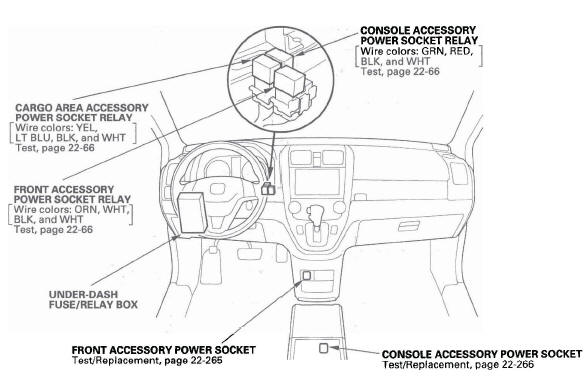
- CONSOLE ACCESSORY POWER SOCKET RELAY
- CONSOLE ACCESSORY POWER SOCKET
- FRONT ACCESSORY POWER SOCKET
- UNDER-DASH FUSE/RELAY BOX
- FRONT ACCESSORY POWER SOCKET RELAY
- CARGO AREA ACCESSORY POWER SOCKET RELAY
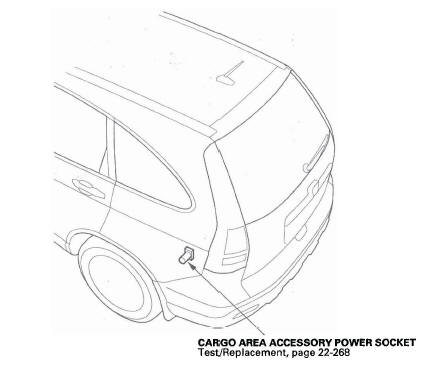
- CARGO AREA ACCESSORY POWER SOCKET
Circuit Diagram
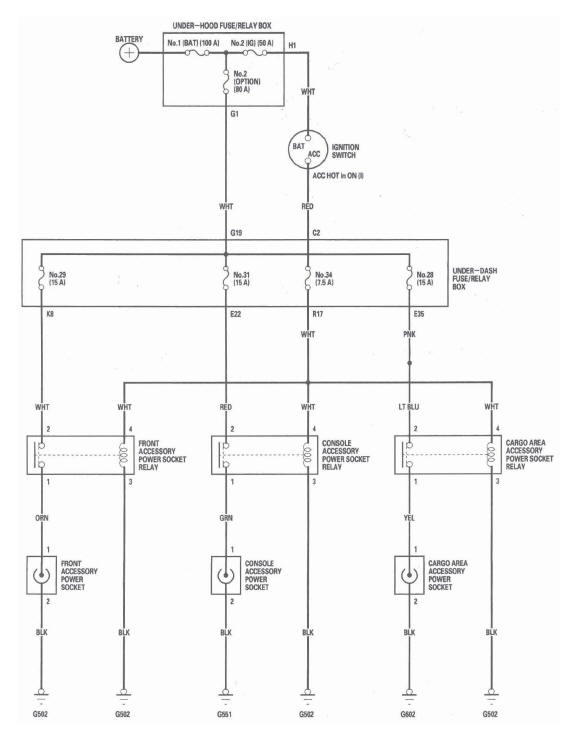
Front Accessory Power Socket Test/Replacement
NOTE: If all of the front, console, and cargo area accessory power sockets do not work, check the No. 34 (7.5 A) fuse in the under-dash fuse/relay box and ground (G502).
1. Remove the dashboard center lower cover.
2. Disconnect the 2P connector (A) from the front accessory power socket (B).

3. Inspect the connector terminals to be sure they are all making good contact.
- If the terminals are bent, loose, or corroded, repair them as necessary and recheck the system.
- If the terminals look OK, go to step 4.
4. Turn the ignition switch to ACC (I).
5. Measure voltage between the power accessory socket 2P connector No.1 terminal and body ground. There should be battery voltage.
- If there is battery voltage, go to step 6.
- If there is no battery voltage, check for:
- Blown No. 29 (15 A) fuse in the under-dash fuse/relay box.
- Faulty front accessory power socket relay.
- Poor ground (G502).
- An open in the wire.
6. Check for continuity between the No.2 terminal and body ground. There should be continuity.
- If there is continuity, go to step 7.
- If there is no continuity, check for:
- Poor ground (G502).
- An open in the wire.
7. Remove the socket (A).

8. Remove the housing (A) from the panel.
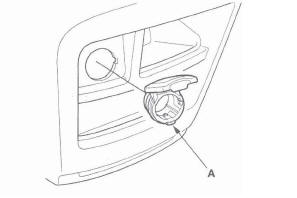
9. Install the power socket in the reverse order of removal.
Console Accessory Power Socket Test/Replacement
NOTE: If all of the front, console, and cargo area accessory power sockets do not work, check the No. 34 (7.5 A) fuse in the under-dash fuse/relay box and poor ground (G502).
1. For EX-L: Remove the center console.
For EX: Remove the center table AUX cover (A) from the table.
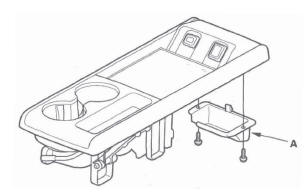
2. Disconnect the 2P connector (A) from the console accessory power socket (B).
EX-L
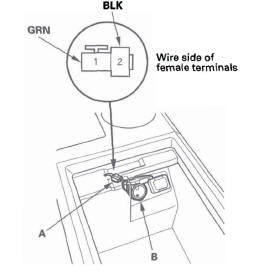
EX
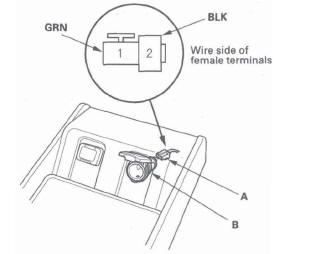
3. Inspect the connector terminals to be sure they are all making good contact.
- If the terminals are bent, loose, or corroded, repair them as necessary and recheck the system.
- If the terminals look OK, go to step 4.
4. Turn the ignition switch to ACC (I).
5. Measure voltage between the No.1 terminal and body ground. There should be battery voltage.
- If there is battery voltage, go to step 6.
- If there is no battery voltage, check for:
- Blown No. 31 (15 A) fuse in the under-dash fuse/relay box.
- Faulty console accessory power socket relay.
- Poor ground (G502).
- An open in the wire.
6. Check for continuity between the No.2 terminal and body ground. There should be continuity.
- If there is continuity, go to step 7.
- If there is no continuity, check for:
- Poor ground (G551).
- An open in the wire.
7. Remove the socket (A).
EX-L
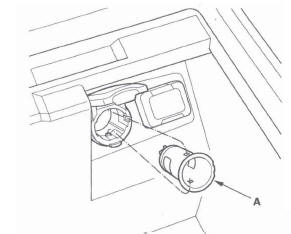
EX
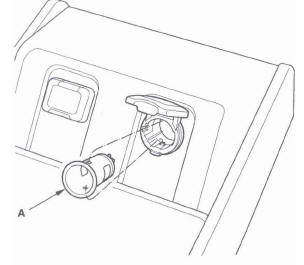
8. Remove the housing (A).
EX-L

EX
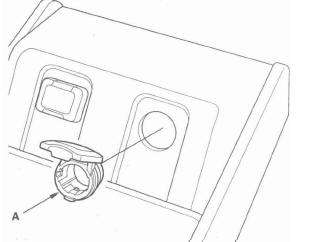
9. Install the power socket in the reverse order of removal.
Cargo Area Accessory Power Socket Test/Replacement
NOTE: If all of the front, console, and cargo area accessory power sockets do not work, check the No. 34 (7.5 A) fuse in the under-dash fuse/relay box and ground (G502).
1. Remove the rear side trim panel.
2. Disconnect the 2P connector (A) from the cargo area accessory power socket (B).
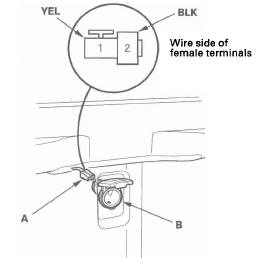
3. Inspect the connector terminals to be sure they are all making good contact.
- If the terminals are bent, loose, or corroded, repair them as necessary and recheck the system.
- If the terminals look OK, go to step 4.
4. Turn the ignition switch to ACC (I).
5. Measure voltage between the No.1 terminal and body ground. There should be battery voltage.
- If there is battery voltage, go to step 5.
- If there is no battery voltage, check for:
- Blown No. 28 (15 A) fuse in the under-dash fuse/relay box.
- Faulty cargo area accessory power socket relay.
- Poor ground (G502).
- An open in the wire.
6. Check for continuity between the No.2 terminal and body ground. There should be continuity.
- If there is continuity, go to step 7.
- If there is no continuity, check for:
- Poor ground (G602).
- An open in the wire.
7. Remove the socket (A).
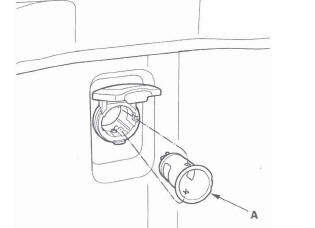
8. Remove the housing (A) from the panel.
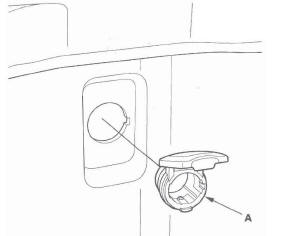
9. Install the power socket in the reverse order of removal.

